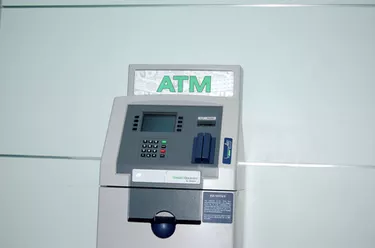
A checking account is a traditional but still very common way to keep money available for use while it is protected by a bank. Although there are several types of checking accounts, one thing they offer in common is the ability to withdraw money through paper checks, debit cards or ATM transactions. A checking account is sometimes called a demand account, share draft account, transactional account, or chequing account in some countries.
History
Video of the Day
Checking accounts have been around for a long time. Their first major use seems to have been in the 1500s in Holland, with the rise of modern banks. As cities such as Amsterdam became major financial and trading centers, businesspeople with a lot of cash on hand needed a way to transfer it both quickly and safely. They would keep it with “cashiers,” who would dispense the money with written orders from the money holders.
Video of the Day
This type of depositing and check-writing carried over to England in the next century, and from there spread to its American colonies.
The first printed checks as we know them today were made in 1762 by a British banker. They became known as “checks” because banks began putting serial numbers on each paper as a way to “check” whom it belonged to.
Function
A checking account’s function is to hold money at a bank, credit union, or other financial institution, in an account that allows the owner of the account to have quick access to her money whenever it’s needed, and at the same time be sure that the funds are secured by the bank. In the United States, money in a checking account is federally insured by the Federal Deposit Insurance Corp. for up to $100,000 per account.
Types
Each financial institution has different types of checking accounts available. Different attributes may be offered for checking accounts for children or minors, households or couples, small or large businesses. Some checking accounts are interest-bearing, meaning that the balance in the account is paid interest over a certain period of time. Some types of accounts limit the number of checks you can write each month, and some charge regular fees to keep the account open.
How To Use
With most checking accounts, you are given a checkbook. You write checks to people or businesses that you need to pay for goods or services. Your signature on each check means you guarantee that when they take it to the bank, or “cash” it, you have that amount of money available to pay them.You also can deposit other people’s checks into your checking account.
In many countries, writing a fraudulent check, or writing a check when you know you don’t actually have the money to cover it, is a criminal act that can result in your prosecution. It is your responsibility to keep track of how much money is available in your checking account. The checkbook register is a useful tool for this, and some people also use online or electronic tracking tools.
Rules
Different banks and credit unions place different restrictions on the use of checking accounts. Most mandate that a minimum of a few dollars be left in the checking account at all times. And most will inflict penalties of fees or charges if you write a check that “bounces,” or isn’t able to be cashed because you don’t have enough money in the account.
You can often add some type of “overdraft protection” to your account, meaning the financial institution will cover the amount of a check that would otherwise bounce, but you will pay extra for that. On the other end of things, be sure to cash or deposit checks that you receive promptly; many checks aren’t good after a certain period of time and must be rewritten or canceled.